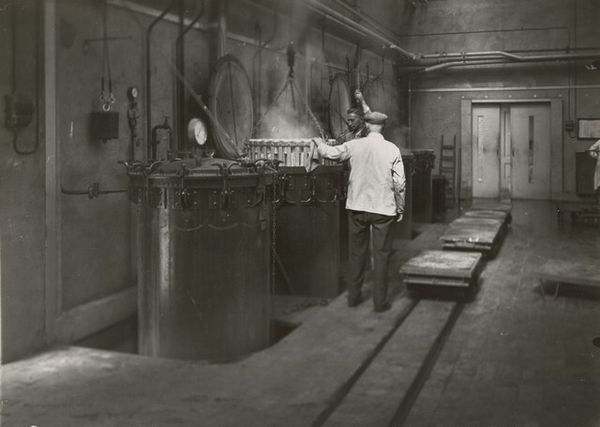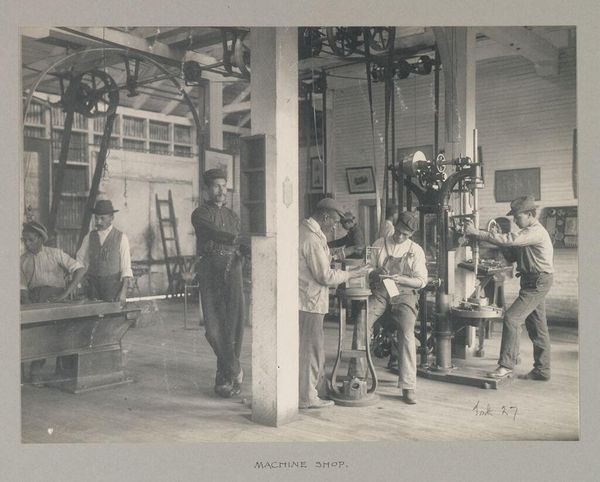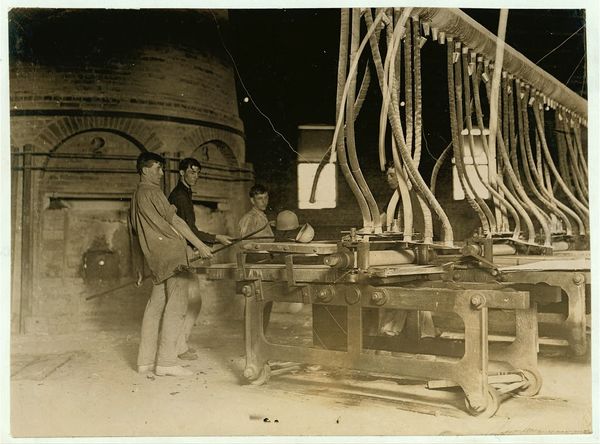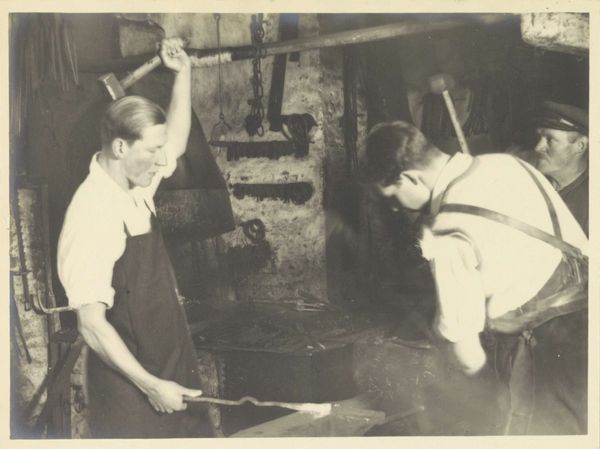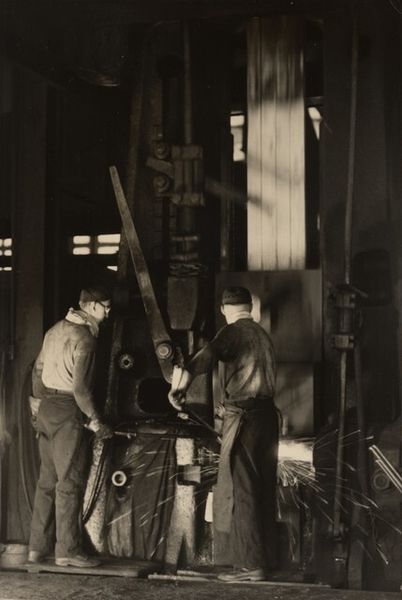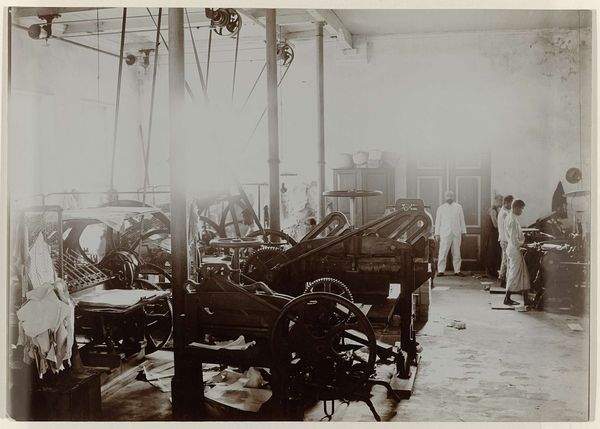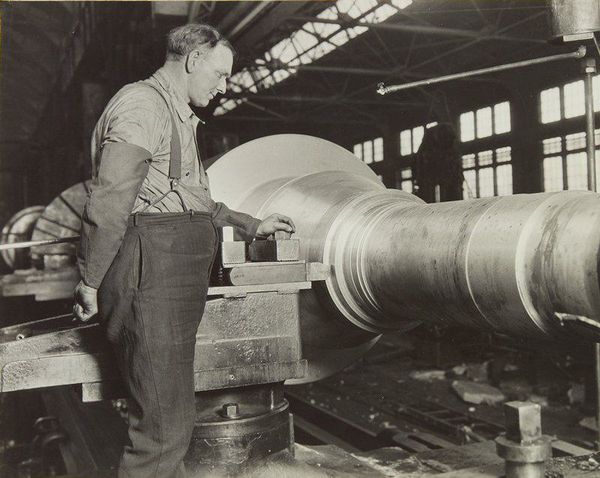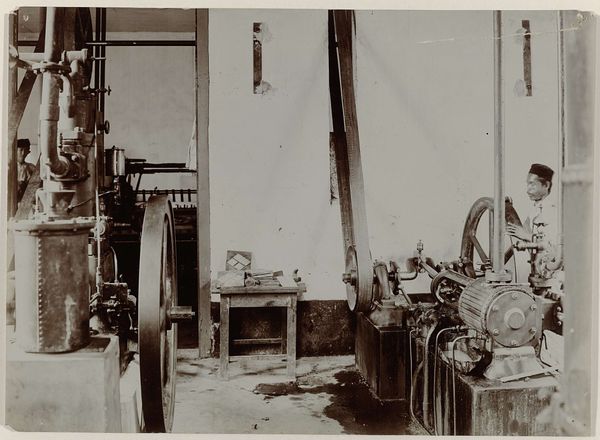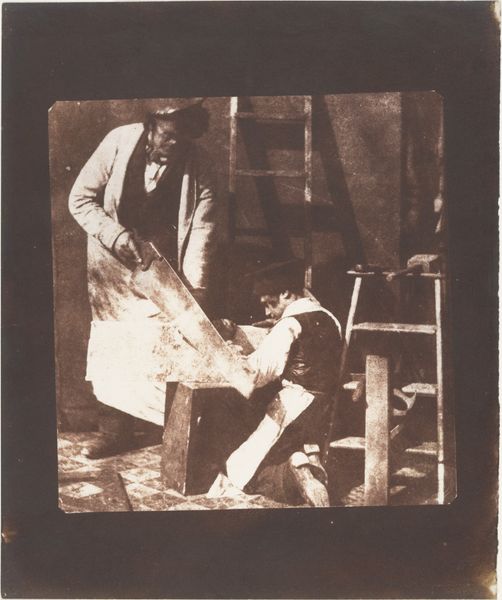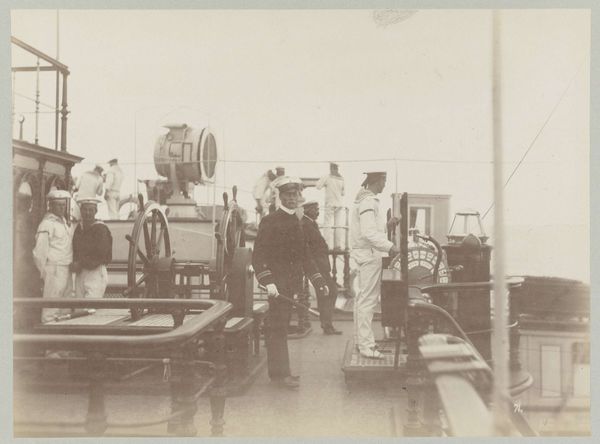
gelatin-silver-print, photography, gelatin-silver-print
#
portrait
#
gelatin-silver-print
#
black and white photography
#
photography
#
black and white
#
gelatin-silver-print
#
monochrome photography
#
genre-painting
#
realism
#
monochrome
Dimensions: 4 3/4 x 6 11/16 in. (12.07 x 16.99 cm) (image)4 13/16 x 7 in. (12.22 x 17.78 cm) (sheet)
Copyright: No Copyright - United States
Editor: This is a gelatin-silver print from 1908 by Lewis Hine, titled *Boy at Planing Machine*. It's a sobering image. The boy's youth is starkly juxtaposed against the immense, dangerous machinery. What are your thoughts when you look at this, the feeling that resonates most? Curator: Melancholy, definitely. There's a haunting quality, isn't there? I'm drawn to the way Hine captured the textures – the smooth metal of the machine against the boy's worn clothes, the grime suggesting hard work and the early industrial age. But the composition… notice how the light falls, almost spotlights, not only on the boy, but also on the mechanisms themselves? It almost elevates the machine, doesn't it, placing it on a near-equal playing field with this child? It invites consideration to not just the circumstances, but a deeper, critical understanding of its reality. I can't help but wonder how Hine achieved this emotionally-wrenching aesthetic while documenting this historical context? Editor: It’s fascinating how the lighting emphasizes both the boy and the machine, as if to ask us who really has the power here. Curator: Precisely! Is the boy operating the machine, or is the machine consuming him? I'd even venture that this isn't just about a photograph, but also the ethical responsibility embedded within any artist’s perspective, who chooses what to capture. Hine certainly makes his perspective very clear. Editor: I see that point and how it raises all sorts of complicated questions that can easily get dismissed or lost to time. That feels really poignant to consider. Curator: And hopefully it will also stay with you as you progress in your art journey!
Comments
minneapolisinstituteofart almost 2 years ago
⋮
Lewis Hine was a documentary photographer, educator, and social reformer. Trained in sociology, Hine taught at the progressive Ethical Culture School in New York City before turning his attention to photography. As a photographer for the National Child Labor Committee (NCLC), Hine traveled the United States to document children in unsafe working conditions in factories, mines, fields, and city streets. Over ten years, he created an indelible record of the human cost of an exploitative labor market, documenting the tired faces of children at the end of their shifts, or even children mutilated by industrial machinery. These disturbing photographs were used in publications and presentations created by Hine and the NCLC, and ultimately promoted sweeping policy changes designed to protect children.
Join the conversation
Join millions of artists and users on Artera today and experience the ultimate creative platform.
